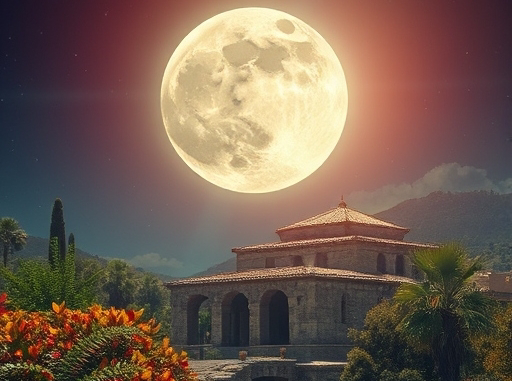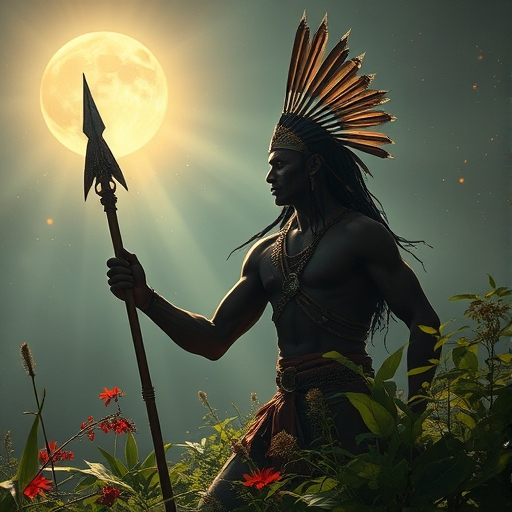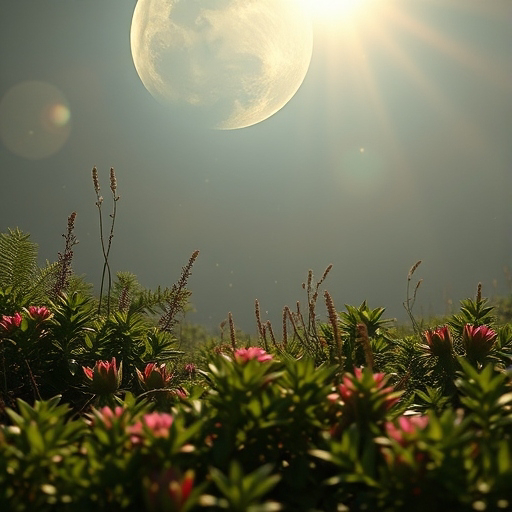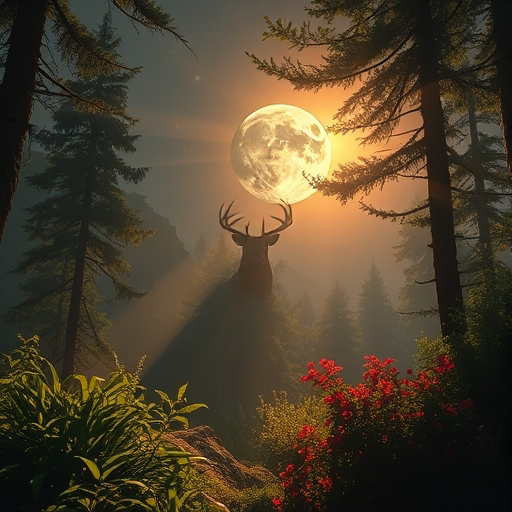The Gezer Calendar
The Gezer calendar is a small limestone tablet with an early Canaanite inscription discovered in 1908 by Irish archaeologist R. A. Stewart Macalister in the ancient city of Gezer, 30 kilometres west of Jerusalem. It is commonly dated to the 10th century BCE.
Below is the inscription.
Paleo script:
𐤉𐤓𐤇𐤅𐤀𐤎𐤐.𐤉𐤓𐤇𐤅𐤆𐤓𐤏.𐤉𐤓𐤇𐤅𐤋𐤒𐤔𐤉𐤓𐤇𐤏𐤑𐤃𐤐𐤔𐤕𐤉𐤓𐤇𐤒𐤑𐤓𐤔𐤏𐤓𐤌𐤉𐤓𐤇𐤒𐤑𐤓𐤅𐤊𐤋𐤉𐤓𐤇𐤅𐤆𐤌𐤓𐤉𐤓𐤇𐤒𐤑𐤀𐤁𐤉(𐤄)
Which in equivalent square Hebrew letters is as follows:
ירחואספ ירחוזרע ירחולקשירחעצדפשתירחקצרשערמירחקצרוכלירחוזמרירחקצ
GPC Interpretation
- Two moons of gathering
- Harvest Moon
- Hunters Moon
- Two moons of planting
- Beaver Moon
- Cold Moon
- Two moons of late sowing
- Wolf Moon
- Snow Moon
- One moon cutting flax
- Worm Moon
- One moon reaping barley
- Pink moon
- One moon reaping and measuring grain
- Flower Moon
- Two moons pruning
- Strawberry Moon
- Buck Moon
- One moon summer fruit
- Sturgeon Moon
Abij
I'm finally getting around to this horrible job that was done with the Gezer Calendar. OMG there is so much brainwashing here how do we decode? First off the translation is mostly accurate only it should say 'moon' not 'month'. Unlike most languages the word month and moon have no linguistic connection in Hebrew.
Now the Jewish Calendar which the state of Israel is trying to push is lunar-solar so a connection does exist. Btw it comes from the Greek Seleucid Empire and is not indigenous to Canaan. Which we shall prove.
The word yareach ירח literally 'moon' is used in every line. It's obvious that the Gezer Calendar is just a moon list. In fact the Obsidian Main File which is currently GPCversionIV.zip has the moons preloaded onto it. This made it easy for me to understand this ancient inscription. Why do I need a moon list? Because I use an ancient solar calendar adapted to secular use. The Rabanites don't have this problem. Interestingly in the Dead Sea Scrolls the Qumranites also had a full moon list. This was one of the first evidences of a solar calendar. If they were using a lunar-solar calendar they wouldn't need a moon list would they?
Note: I adopted the term Rabanite from Karite Judaism for academic purposes. It's better than full on Dead Sea Scroll terminology "son's of darkness".
You can ride an Electric Unicycle and pay nothing in fuel, avoid traffic, insurance and the need to look for parking. Or you can haul groceries with a car. Can't have both. Same is true with Calendars. In GPC we sacrifice harmony with the moon for accuracy, harmony with the weekly cycle, improved logistics and advanced technology light years ahead of everyone else. It is as true 2,000 years ago as it is today.
I'm not fond of American culture but I did adopt their moon list which was mostly adopted from Native Americans. Let's go through it together line by line. Doing this we can compare the ancient lives of Native Americans to that of Qumranites and well even the Rabanites. I'm seeking peace and harmony and trying to avoid our calendars wars which is described in the very first page of the Dead Sea Scrolls in the Damascus Document.
𐤉𐤓𐤇𐤅𐤀𐤎𐤐.
Two moons of gathering
This is equivalent to to the Harvest Moon and the Hunters Moon. Harvest Moon is closest to autumn equinox.
Psalm 104:19
He made the moon to mark the seasons,and the sun knows when to go down.
This verse is referring to the appointed times of the vernal and autumnal equinoxes when the moon serves as a witness to the season as established by the sun alone.
Enoch 1 tells us that two times a year the moon changes its course to set with the sun through the same gate.
The Sun only rises due east and sets due west on 2 days of the year -- the spring and fall equinoxes!
Can You Watch the Sunset and Moonrise at the Same Time?
The best chance to witness the phenomenon is when the moon is full nearest the vernal (spring) and autumnal (fall) equinoxes. That's because the moonrise is closest to due east and sets closest to due west on those dates. When the moon is full at these times of year, it's just about directly opposite the sun in the sky as it sets.
These two moons are referred to as:
🌝 The Pink Moon aka the Paschal Moon
🌝 The Harvest Moon
The Hunters Moon is when deer are fully grown. My beloved Indian friends, I mean from Bharat are apalled when I speak of animal flesh. I avoid the topic altogether but you can see the problem. Hebraic and American culture are saturated in it.
𐤉𐤓𐤇𐤅𐤆𐤓𐤏.
Two moons of gathering
This corresponds to the Beaver Moon and the Cold Moon. Beavers are actually important because they literally observe the Sabbath and yes they keep a lunar calendar. They're animals! They start building their homes at this time. Native Americans call the next one the Cold Moon because well it's cold! I don't miss mainland America at all.
𐤉𐤓𐤇𐤅𐤋𐤒𐤔
Two moons of late sowing
OMG I can't believe I still know how to read Paleo Hebrew. The Wolf moon is called such because of the howling of wolves at this time. Both the Native Americans and Anglo-Saxons use this term. Wow. Way different from our caffeine addicted TikTok generation. The term Snow Moon describes heavy snow fall at this time. More native American culture. Is this a Syncretism?
𐤉𐤓𐤇𐤏𐤑𐤃𐤐𐤔𐤕
One moon cutting flax
The March full moon is called the Worm Moon because of the emergence of earthworms as the ground thaws in many parts of the Northern Hemisphere. Again from Native Americans. In Canada the tribes call it Sugar Moon, marking the time for maple tree sap harvesting and the Anishinaabe new year. Hey this moon is closest full moon to the GPC New Year. What a coincidence.
𐤉𐤓𐤇𐤒𐤑𐤓𐤔𐤏𐤓𐤌
One moon reaping barley
Native Americans call it the Pink Moon because this is when you see pink flowers. It's the barley harvest over in Israel at this time. I wonder if pink flowers also show up in Israel at this time?
𐤉𐤓𐤇𐤒𐤑𐤓𐤅𐤊𐤋
One moon reaping and measuring grain
The Flower Moon is called such because this month has the most vibrant number of flowers. Think Mayflower.
𐤉𐤓𐤇𐤅𐤆𐤌𐤓
Two moons pruning
The Strawberry Moon is called such because native Americans didn't want to forget to harvest these June fruits. In GPC I used the strawberry as a symbol for all updates to the Obsidian Main File program. The LOG queried all updates by scanning for the strawberry 🍓 emoji. Why? Because just as GPC starts it's week with the creation of the sun on Wednesday in accordance with the Menorah so does the Qumran Sundial start the year in June or Quadsum - the fourth month with the summer solstice. The number four is significant.
The Buck Moon is called such because it coincides with the time of year when male deer, or bucks, are growing their antlers, and this observation was adopted and named by Native American tribes.
𐤉𐤓𐤇𐤒𐤑
One moon summer fruit
The Sturgeon Moon name originates from the Algonquin tribes in what is now the northeastern United States. They referred to this full moon in August as such because it coincided with the time when sturgeons were abundant and easily caught during the late summer season.
As you can see the weather in Israel has little to no similarity to the United States and Europe. America is proof of manifesting. Germanic tribes seeking freedom ended up colonizing the other side of the world with similar weather. The Iberian Europeans that actually lived around palm trees colonized the part of America where palms trees can grow.
Well this blog post hopefully shed some light on the importance of tracking moon cycles in three different cultures(5 if you distinguish Jewish sects). Hopefully it also helped to shed light on the true indigenous calendar of Canaan. Honestly myself personally, religion, identity...when do these things ever improve our world? I just want to live on a more efficient planet that respects our environment. I've used that lunar-solar calendar for far too long. There's a reason the Saudis went solar. It's more efficient and Peace IS efficiency.















Comments
Post a Comment